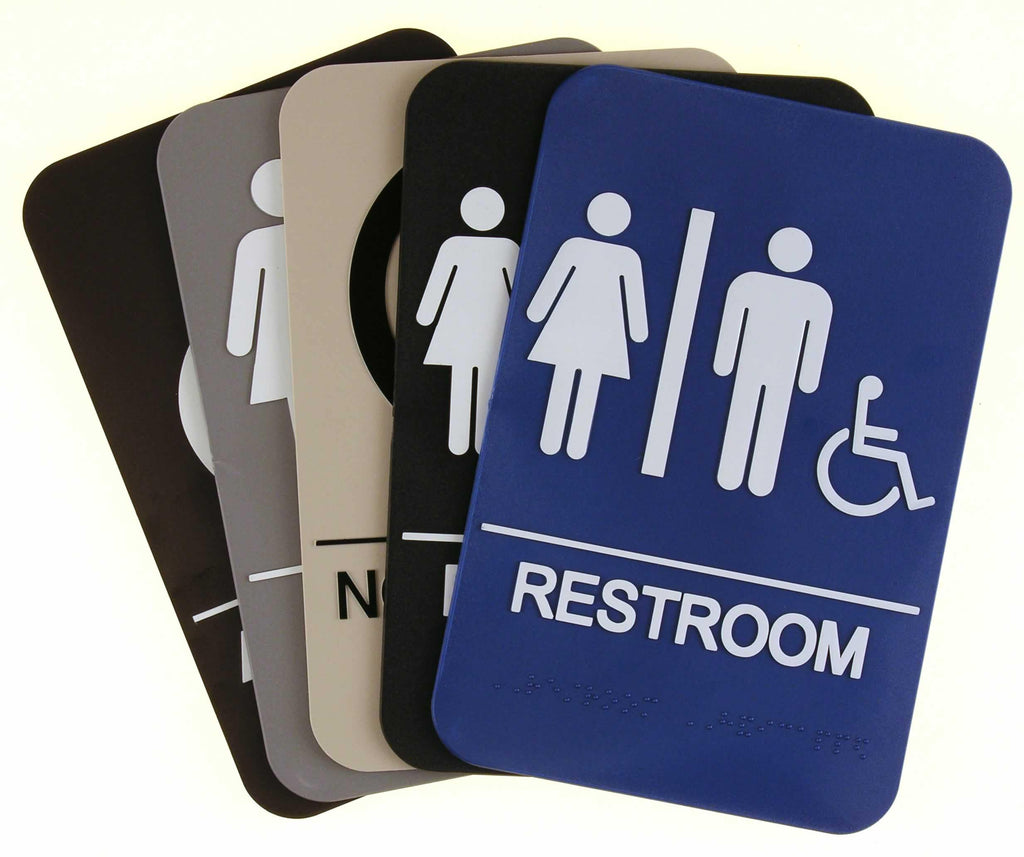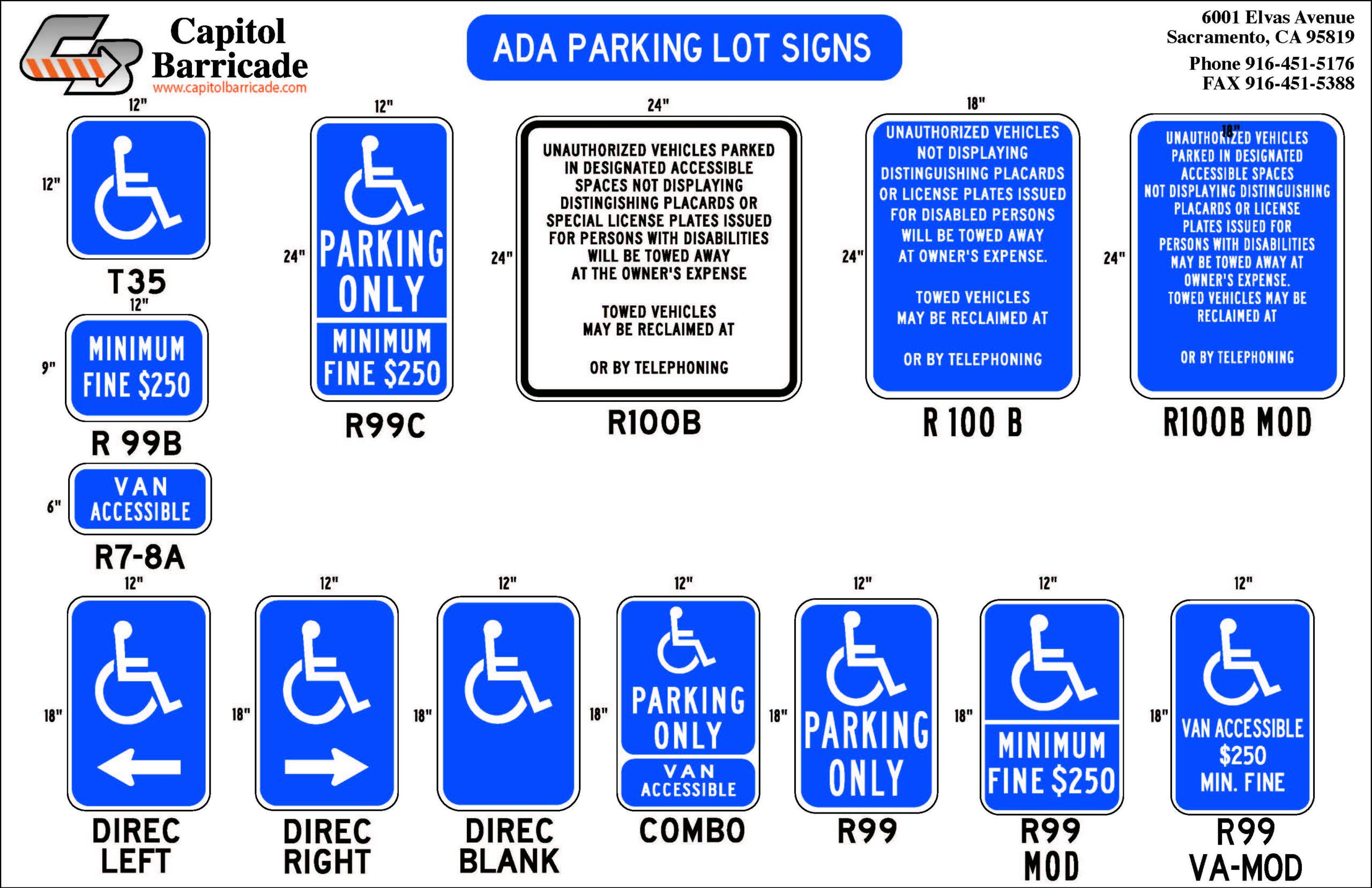The Role of ADA Signs in Adhering To Ease Of Access Specifications
The Role of ADA Signs in Adhering To Ease Of Access Specifications
Blog Article
Discovering the Trick Features of ADA Indications for Boosted Ease Of Access
In the realm of accessibility, ADA signs serve as silent yet effective allies, guaranteeing that rooms are accessible and inclusive for people with handicaps. By integrating Braille and responsive components, these indications damage obstacles for the aesthetically damaged, while high-contrast color schemes and understandable fonts cater to diverse visual demands.
Relevance of ADA Conformity
Ensuring conformity with the Americans with Disabilities Act (ADA) is essential for fostering inclusivity and equal gain access to in public rooms and offices. The ADA, established in 1990, mandates that all public centers, employers, and transport solutions fit people with impairments, ensuring they enjoy the very same civil liberties and chances as others. Compliance with ADA requirements not only fulfills lawful commitments however additionally improves an organization's credibility by demonstrating its dedication to variety and inclusivity.
One of the essential aspects of ADA compliance is the application of obtainable signage. ADA signs are created to make sure that individuals with disabilities can easily browse with rooms and structures. These indicators should comply with specific standards pertaining to size, font style, shade contrast, and positioning to ensure exposure and readability for all. Appropriately executed ADA signage aids eliminate obstacles that individuals with impairments commonly come across, thus advertising their freedom and confidence (ADA Signs).
Additionally, adhering to ADA policies can minimize the risk of legal repercussions and possible fines. Organizations that fall short to conform with ADA guidelines may deal with charges or legal actions, which can be both destructive and monetarily troublesome to their public image. Therefore, ADA compliance is indispensable to promoting a fair setting for everybody.
Braille and Tactile Components
The consolidation of Braille and tactile components right into ADA signs embodies the principles of access and inclusivity. It is normally placed underneath the matching text on signs to make sure that individuals can access the details without aesthetic assistance.
Tactile aspects prolong beyond Braille and consist of elevated signs and personalities. These components are created to be noticeable by touch, allowing people to identify space numbers, toilets, departures, and other vital locations. The ADA sets specific guidelines relating to the size, spacing, and placement of these responsive elements to enhance readability and make certain consistency across various environments.

High-Contrast Color Design
High-contrast color pattern play an essential role in boosting the exposure and readability of ADA signs for people with aesthetic impairments. These plans are vital as they make best use of the distinction in light reflectance between message and background, making certain that indications are quickly noticeable, also from a range. The Americans with Disabilities Act (ADA) mandates using particular color contrasts to accommodate those with restricted vision, making it a crucial element of conformity.
The efficiency of high-contrast colors hinges on their capacity to attract attention in numerous lighting conditions, consisting of dimly lit settings and areas with glare. Usually, dark message on a light background or light text on a dark their website history is employed to accomplish ideal contrast. Black message on a white or yellow history provides a raw aesthetic difference that assists in quick acknowledgment and comprehension.

Legible Fonts and Text Dimension
When taking into consideration the design of ADA signage, the selection of legible typefaces and ideal text dimension can not be overemphasized. The Americans with Disabilities Act (ADA) mandates that typefaces should be sans-serif and not italic, oblique, script, highly attractive, click here to read or of unusual form.
The size of the message additionally plays a critical duty in accessibility. According to ADA guidelines, the minimal message elevation must be 5/8 inch, and it must enhance proportionally with watching range. This is particularly crucial in public areas where signage needs to be read quickly and properly. Consistency in message size contributes to a cohesive visual experience, helping individuals in navigating environments effectively.
In addition, spacing in between lines and letters is important to clarity. Ample spacing avoids characters from appearing crowded, boosting readability. By sticking to these standards, designers can substantially enhance availability, making sure that signage offers its desired function for all people, despite their visual capabilities.
Efficient Placement Strategies
Strategic placement of ADA signs is essential for making best use of ease of access and ensuring compliance with legal requirements. Appropriately located indicators assist people with impairments properly, promoting navigation in public spaces. Trick considerations include closeness, exposure, and height. ADA standards stipulate that signs should be mounted at an elevation between 48 to 60 inches from the ground to guarantee they are within the line of view for both standing and seated people. This standard elevation variety is important for inclusivity, making my review here it possible for wheelchair users and individuals of varying heights to accessibility information effortlessly.
Furthermore, indications should be positioned surrounding to the lock side of doors to enable very easy recognition prior to access. Uniformity in indicator placement throughout a center improves predictability, lowering confusion and enhancing overall customer experience.

Final Thought
ADA indicators play a vital duty in promoting availability by integrating attributes that deal with the demands of individuals with specials needs. Integrating Braille and tactile aspects guarantees important info comes to the visually damaged, while high-contrast color design and readable sans-serif fonts enhance exposure across numerous lighting problems. Reliable positioning strategies, such as appropriate installing elevations and critical locations, better assist in navigation. These components jointly cultivate an inclusive atmosphere, emphasizing the importance of ADA conformity in guaranteeing equal access for all.
In the world of access, ADA signs offer as quiet yet powerful allies, making certain that spaces are comprehensive and navigable for individuals with handicaps. The ADA, enacted in 1990, mandates that all public facilities, companies, and transportation services fit individuals with disabilities, guaranteeing they take pleasure in the exact same legal rights and possibilities as others. ADA Signs. ADA indicators are created to ensure that individuals with handicaps can conveniently navigate with spaces and buildings. ADA standards stipulate that indicators need to be installed at a height in between 48 to 60 inches from the ground to ensure they are within the line of view for both standing and seated individuals.ADA signs play an important duty in advertising accessibility by incorporating features that deal with the requirements of individuals with handicaps
Report this page